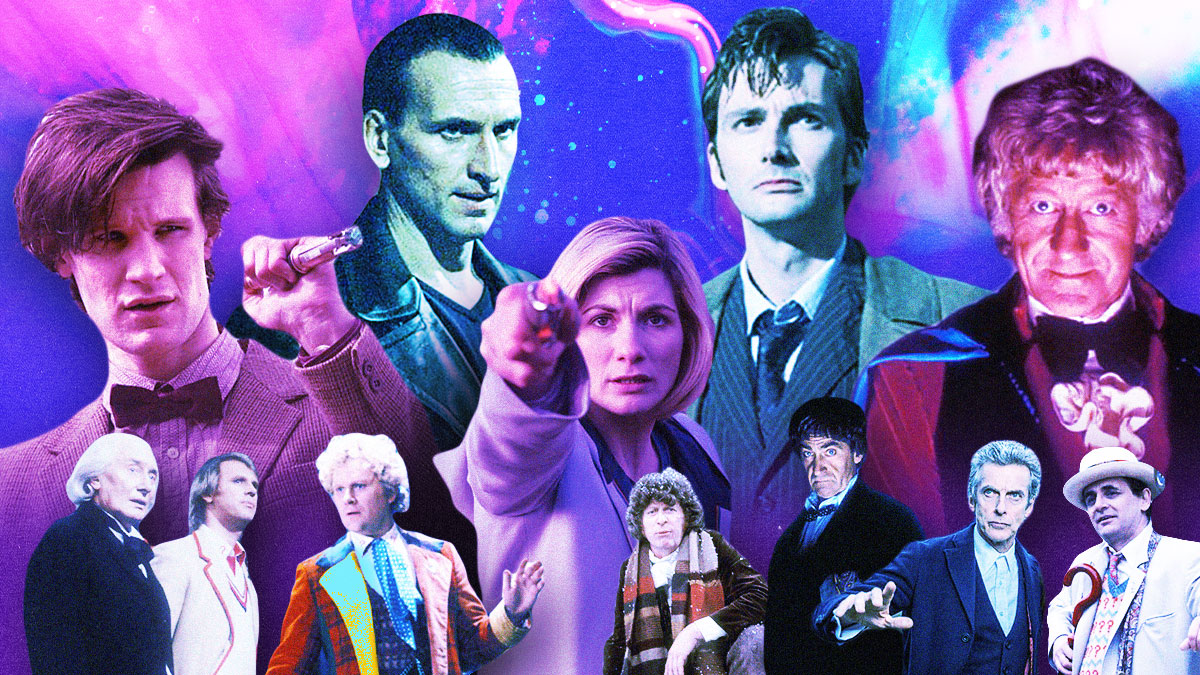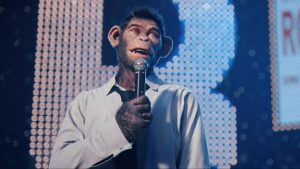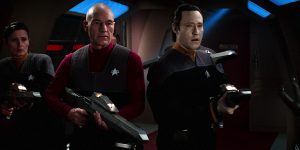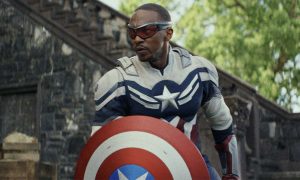
‘Right at the very beginning!’ – answered nobody, ever to the question of where a newcomer to Doctor Who should start watching. This is a show with almost 900 episodes, six decades of production, and a megaton of baggage (apologies, lore).
To start with 1963’s “An Unearthly Child” now and try to watch everything, plus spin-offs, before you could get involved with the Ncuti Gatwa era? You’d need a TARDIS.
So where to jump in? Now that BBC iPlayer is host to the whole Doctor Who kit and kaboodle in the UK as part of its new “Whoniverse” division, it’s a very good question. That’s why we asked it to our writhing nest of Doctor Who experts. And here’s what they recommend:
Rose (2005)
“Rose” is the first episode of the revived version of Doctor Who. Having been off air since a one-off special in 1996, this was designed as a continuation of the original run but mainly as a stepping-on point for as many people as possible. If you bought all the novels published in the Nineties, this was for you. If you faintly remembered ‘The one with the bubble wrap monsters’ or when the Daleks climbed the stairs, this was for you. If you had never heard of Doctor Who, if you had thought it was some middle-class snob cutting about a cardboard universe, if you had thought it was a Boys’ Own show which simply didn’t consider women and girls as a possible audience… the hope was that this was also for you. It was reaching out, plus it had a primetime Saturday evening slot and the confidence of the BBC behind it (two things it hadn’t had at the same time since the Seventies).
So this is why “Rose” is a great place to start. That’s what it is for, and it achieves so many of its aims. It’s both sequel and blank slate, adhering to the formula while challenging tropes; it’s the foundations of the entire revived run and also instantly starts suggesting ways into the original series (‘Did you like the dummies that came to life? Feel like they could be more uncanny and terrifying? WELL GOOD NEWS.’). The drip feed of information about the show’s past makes it a great way to get people into all eras of Doctor Who if you’re willing to play a long game.
Also the Wheelie Bin bit reminds you not to take this too seriously. – Andrew Blair
Blink (2007)
It may have been Russell T. Davies who revived Doctor Who, but it was Steven Moffat who helped me convince my friends and family that it wasn’t just bubble-wrap monsters and screaming like the old days. I used to deploy “The Empty Child” (see below) at sceptics, but by series three I’d added a new weapon in my arsenal – the phenomenal Doctor-lite episode, “Blink”. Eyebrows were raised. Why, when trying to convince people that this gregarious, outer-space scientist with a whizzy screwdriver (who sinfully wasn’t The One with the Scarf) was worth their time, did I offer up an episode he was barely in?
Well, I reckon ‘Blink’ serves to distil what made noughties Doctor Who work. For one thing, it was contemporary, with characters riffing on ITV crime dramas and DVD collections, flirting and bantering as mates – everyone’s very likeable, and it helps the episode to draw you in when they’re in danger.
Second, the script gradually lays out all the main conceits of the show – jumps in space and time, intelligent monsters, a box that’s bigger on the inside… The Doctor is presented as authoritative yet kind in his taped recordings, with his seemingly-impossible ability to ‘talk to the future’ ultimately explained: he’s got the script. The Doctor can help us because he knows more than us.
And then, of course, there are the Weeping Angels. Now as iconic as the Daleks and Cybermen, scary no matter how old you are, this first appearance is arguably their finest. “Blink” is Doctor Who in a nutshell, and as Sally Sparrow comes to understand the importance of the Doctor, so do we. – Chris Allcock
The Peter Cushing TV Movies (1965 & 1966)
No, seriously (I know you’re reading this, Doctor Who fans, we read everything).
It’s 1965. Two years into its run, a strange little BBC show called Doctor Who has captured the public’s imagination – helped in no small part by some screeching alien dustbins, who have proven so improbably popular that someone has coined the (somewhat grandiose) term ‘Dalekmania’. Clearly it doesn’t take a genius to greenlight a motion picture.
This being the 60s, when shared universes, canon and so on were not the unbreakable contracts they are today, that motion picture was an odd duck. Dr Who and the Daleks and its 1966 sequel were effectively re-jigged versions of earlier televised serials, with the focus squarely on the Daleks – now in glorious Technicolor! – and the titular hero more of an afterthought. Instead of a stern alien called The Doctor and played by William Hartnell, he was a twinkly human grandfather called Dr Who, played by Peter Cushing – though he did at least retain the phone box.
A ludicrous place to start with the franchise, surely? A blatant cash grab of dubious canonical status, with key elements of the character changed to appeal to mass audiences. Nonsense!
Well, yes. But it’s also the first piece of Who that I ever consumed as a child. I watched that VHS over and over again, enthralled by the phone box, the Daleks, the elderly hero, the sheer strangeness. I had no concept of canon. I was simply, in some unquantifiable, alchemical way, hooked. And 30 years later, I still am.
And honestly, Who continuity has always been a malleable, contested thing. A jumble of conflicting artistic visions, discarded threads, hasty re-writes, and ideas fantastic, bizarre and sometimes terrible. So really, it’s as good a place to start as any. – Stefan Mohamed
Doctor Who: The Movie (1996)
Dedicated Whovians are probably horrified by the suggestion that the 1996 TV movie
starring Paul McGann is a good jumping-on point for Doctor Who. It’s too American! They’re surely exclaiming as they read this. The plot is hopelessly outdated! The Doctor can’t even get his own family history right!
But those are the objections of long-time fans who know the show inside and out. We’re looking for something to pull in new viewers. The TV movie is one of four or five episodes in the history of Doctor Who that are explicitly designed to provide a jumping-on point for new viewers. The very first episode obviously does that, but is limited in its appeal to modern youngsters by being a slow-paced, black and white, slightly fuzzy TV episode from the 1960s. The first episode of ‘Spearhead from Space’ manages to be in colour but has similar issues.
The closest competitor to the TV movie is obviously “Rose” (see above), a great episode that brought thousands of fans to the show. But the TV movie is an even better choice. It’s longer, allowing the viewer to really get to know the Doctor. It includes an appearance from the previous Doctor and the most inventive version of regeneration the show has done, effectively and dramatically introducing new viewers to the show’s unique concept.
The American budget produced some impressive sets and production values, even allowing for the fact they have inevitably aged a bit by now. McGann’s Doctor is dashing and romantic
and charismatic, a character new viewers can quickly like and admire; however beloved the
pricklier Doctors may be, it is the playful ones who tend to appeal the most to new viewers.
And a lot of the tropes of New Who, from the more extensive use of shorter bursts of time
travel to all the kissing, originate here, making it the perfect introduction to 21st -century
Doctor Who. – Juliette Harrisson
The Christmas Invasion (2005)
Yes, Christopher Eccleston was great, but it’s when Tenth Doctor David Tennant arrived that the golden age of modern Doctor Who really began. His first episode was hour-long 2005 festive special “The Christmas Invasion”, in which alien race the Sycorax tries to take over Earth by threatening to kill a third of its population (ho ho ho, Merry Christmas) and also attempt the most festive murder of all time by trying to off the Doctor, Rose and her mum Jackie with a killer Christmas tree.
Tennant only features for the final 20 minutes, spending most of the episode sleeping off a sort of regeneration hangover (something we can all relate to at Christmas), but that doesn’t prevent him from starting his reign as the Doctor with a bang. He wakes up just in time, and then manages to pack in a host of quotable lines: “rude and not ginger”, accidentally quoting “The Circle of Life” from The Lion King, and knowing that just six words – “Don’t you think she looks tired?” – are enough to bring down a prime minister (well, they were in those days, anyway).
“The Christmas Invasion” was rightly crowned the greatest Doctor Who Christmas special in 2014, launching a run of success for both Tennant and Doctor Who in general: David Tennant has repeatedly been voted the best Doctor of all time, and his era also earned a string of successes at the NTAs, where both he and Doctor Who won big awards four times between 2006 and 2010. You can’t argue with those numbers – and who doesn’t love a Christmas special? – Laura Vickers-Green
The Empty Child/The Doctor Dances (2005)
“Everybody lives, Rose. Just this once, everybody lives!” Those are the lines that made me fall in love with Doctor Who. As a nerdy American kid growing up in the 80s, I was of course aware of the show and caught a couple of Tom Baker episodes on PBS, but the character didn’t grab my attention. It wasn’t until 2005, when I heard a few guys at the comic book shop talking about the first two episodes of the rebooted series, that I decided to follow their lead and check out the show via unsavoury internet sites. Of course, I liked it, but it just seemed like a satisfying sci-fi tv show, nothing special.
And then the Doctor danced. Written by Steven Moffat, the two-parter “The Empty Child” and “The Doctor Dances” has an irresistible central image, that of a child in a gas mask asking, “Are you my mummy?”. But it’s neither the horror conceit nor the episodes’ World War II setting that makes it special. It’s the pure joy crossing Eccleston’s face as the Doctor sees the connection between mother and child, it’s the qualifier “just this once.” In that moment, I realised that the Doctor was a unique hero in science-fiction – a hero who, despite the massive stakes of his adventures, never forgets the simple joy of seeing regular people live. – Joe George
The Eleventh Hour (2010)
For many American fans, Matt Smith’s premiere as the Eleventh Doctor was their starting point. This resulted from ever-changing international licensing for Doctor Who, however, the way the story was structured was perfectly placed to get new and mainly younger viewers to watch.
In 2010 BBC America gained the rights to the series from the SciFi (now rebranded SyFy) channel and began to air episodes much closer in time with the UK. Beforehand SyFy was airing David Tennant’s episodes at least 6 months behind and they were also inconsistent with showing the spinoff series Torchwood and The Sarah Jane Adventures. Around the same time, US Netflix began showing Matt Smith’s seasons and also made David Tennant’s episodes available.
Steven Moffat introduced Amy Pond as a little girl who showed her there were galaxies and worlds beyond her small town. The Eleventh Doctor was an ancient man who looked like a quirky professor but also was struggling with “adulthood”. This fairy tale-esque story was primed to get new American viewers hooked. Series five’s plot lines were not reliant on having a previous understanding of Doctor Who lore to understand. Recurring monsters were given new context unique to Moffat’s storylines. River Song’s reintroduction was also written in a way that fans who didn’t watch the earlier episodes could understand. Another argument in favor of series five is that the visual special effects haven’t aged as much because they were already filmed in HD. Sometimes the outdated visuals of earlier episodes, especially Classic Who, are an obstacle for viewers used to recent big budget sci fi/fantasy series and movies. “The Eleventh Hour” is a less traditional starting point for Modern Doctor Who viewers but a great place for newbies to start. – Amanda Rae-Prescott
The 2023 Christmas Special
Given what we know about the 60th anniversary specials, it is going to be a great time for Doctor Who fans who like nudging you to explain in a comic in 1988 or a fan-favourite episode that nobody has ever actually watched.’
Reuniting a dream team of lead cast, lead writer, producers and even composer, the specials are bound to be a new and exciting story, but also a chance to relive old glories and share some obscure references.
And why not? The show has been on air for 60 years. More actors have now played the Doctor since the show was cancelled than had been in the role during its original run. It deserves a victory lap and all the fan service you can eat. But if we know Russell T. Davies, he already has his eyes on the next 60 years, and the next 60 years start this year on Christmas Day.
With a new Doctor, a new companion, and an (as yet unconfirmed but come on, it’s happening) Christmas Day time slot for the first time since Jodie Whittaker fell out of her TARDIS, Davies will be gunning to make this one of the most-watched episodes in Who history. But more than that, it will be an episode designed to attract, and hold onto, a whole new audience for the show.
And nobody knows how to attract and hook a Doctor Who audience like Davies. He’s done it before with episodes like “Rose”, “Smith & Jones”, and “Partners in Crime”, any of which deserve a spot on this list, not to mention the pilots of Torchwood and The Sarah Jane Adventures. So, this Christmas special is going to be the one to start with. Not as a place to catch up from, but as the start of a whole new wild ride. – Chris Farnell
Doctor Who returns on November 25 to BBC One, BBC iPlayer and Disney+.
The post Where Should Someone New to Doctor Who Start Watching? appeared first on Den of Geek.





